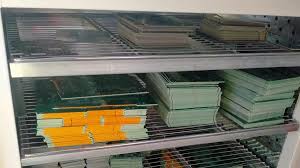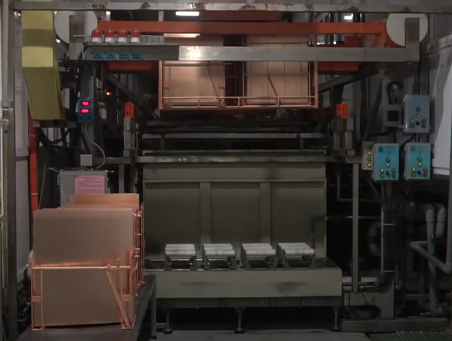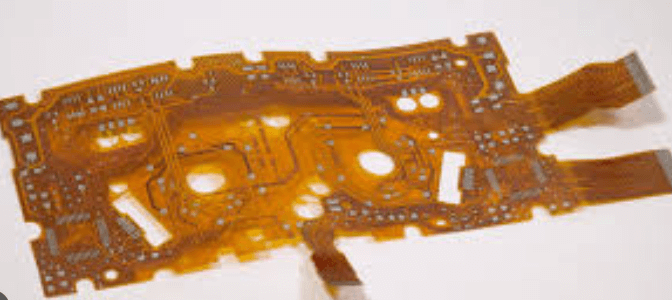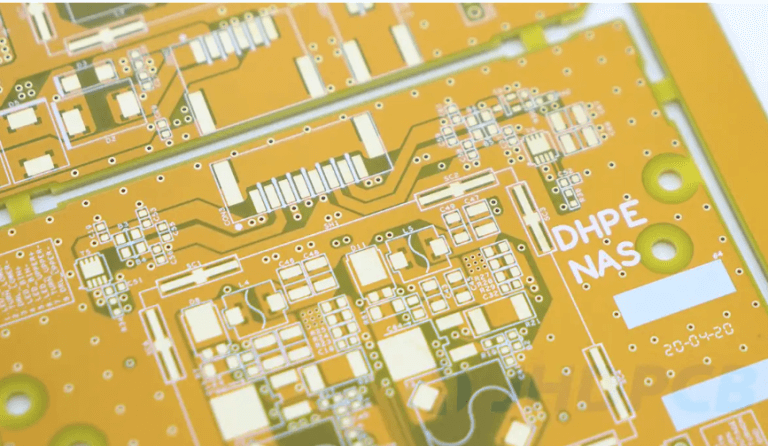What is high speed signal in pcb
Understanding High Speed Signals in PCB Design
In the realm of printed circuit board (PCB) design, the concept of high-speed signals has become increasingly significant as electronic devices continue to evolve in complexity and performance.
High-speed signals refer to electrical signals that transition rapidly between different voltage levels, typically characterized by their high frequency and fast rise and fall times. Understanding these signals is crucial for PCB designers, as improper handling can lead to signal integrity issues, electromagnetic interference (EMI), and overall system malfunction.
To begin with, high-speed signals are often associated with digital circuits where data is transmitted at high rates.
These signals are not merely defined by their frequency but also by the speed at which they change states. For instance, a signal with a frequency of 1 GHz has a period of 1 nanosecond, and if the rise and fall times are in the order of picoseconds, it qualifies as a high-speed signal. The rapid transitions can cause reflections, crosstalk, and other forms of signal degradation if not managed properly.
One of the primary challenges in high-speed PCB design is maintaining signal integrity.
Signal integrity refers to the preservation of the signal’s shape and timing as it travels through the PCB. Factors such as impedance mismatches, trace length, and the dielectric properties of the PCB material can significantly impact signal integrity. To mitigate these issues, designers often employ techniques such as controlled impedance routing, where the width and spacing of traces are carefully calculated to match the characteristic impedance of the transmission line.
Moreover, the layout of the PCB plays a pivotal role in managing high-speed signals.
Proper placement of components, minimizing the length of high-speed traces, and ensuring adequate spacing between them are essential practices. Additionally, the use of ground planes and power planes can help reduce noise and provide a stable reference for signals. Ground planes, in particular, are effective in minimizing EMI by providing a low-impedance return path for high-frequency currents.
Another critical aspect to consider is the use of differential signaling.
Differential pairs consist of two complementary signals that are routed together, with one signal being the inverse of the other. This technique helps in reducing susceptibility to external noise and crosstalk, as any interference affects both signals equally and can be canceled out at the receiver end. Differential signaling is commonly used in high-speed interfaces such as USB, HDMI, and PCIe.
Furthermore, the choice of PCB materials can influence the performance of high-speed signals.
Materials with low dielectric constant and low loss tangent are preferred for high-frequency applications, as they reduce signal attenuation and dispersion. High-frequency laminates, such as those made from PTFE (Teflon) or ceramic-filled substrates, are often used in high-speed PCB designs.
In addition to material selection, the use of simulation tools is indispensable in high-speed PCB design.
Signal integrity simulation software allows designers to model and analyze the behavior of high-speed signals within the PCB. These tools can predict potential issues such as reflections, crosstalk, and timing errors, enabling designers to make informed decisions and optimize the layout before fabrication.
In conclusion, understanding high-speed signals in PCB design is essential for ensuring the reliable performance of modern electronic devices. By addressing factors such as signal integrity, PCB layout, differential signaling, material selection, and utilizing simulation tools, designers can effectively manage high-speed signals and mitigate potential issues. As technology continues to advance, the importance of mastering high-speed PCB design will only grow, making it a critical skill for engineers in the field.
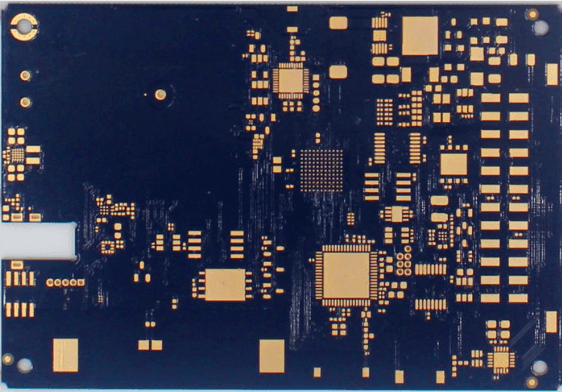
Key Challenges of High Speed Signals in PCB Layout
High-speed signals in printed circuit board (PCB) design present a unique set of challenges that require careful consideration and meticulous planning. As electronic devices continue to evolve, the demand for faster data transmission rates has increased, necessitating the use of high-speed signals. These signals, typically characterized by their rapid rise and fall times, can lead to a variety of issues if not properly managed.
One of the primary challenges associated with high-speed signals is signal integrity.
Signal integrity refers to the quality and reliability of the electrical signals as they travel through the PCB. High-speed signals are particularly susceptible to degradation due to factors such as impedance mismatches, crosstalk, and electromagnetic interference (EMI). Impedance mismatches occur when the impedance of the transmission line does not match the impedance of the source or load, leading to signal reflections that can distort the signal and cause data errors.
Crosstalk, another significant challenge, arises when a signal in one trace induces an unwanted signal in an adjacent trace.
This can be particularly problematic in high-density PCBs where traces are closely spaced. Crosstalk can lead to data corruption and reduced performance, making it essential to carefully manage trace spacing and routing. Electromagnetic interference (EMI) is also a critical concern in high-speed PCB design. High-speed signals can generate electromagnetic fields that can interfere with other components and signals on the board. EMI can lead to signal degradation, data loss, and even regulatory compliance issues. To mitigate EMI, designers often employ techniques such as shielding, grounding, and careful layout planning.
Another challenge in high-speed PCB design is managing power integrity.
Power integrity refers to the ability of the power delivery network to provide a stable and noise-free power supply to the components. High-speed signals can cause fluctuations in the power supply, leading to voltage drops and noise that can affect the performance of the entire system.
Ensuring proper decoupling and using low-impedance power planes are essential strategies for maintaining power integrity. Thermal management is also a critical consideration in high-speed PCB design.
High-speed signals can generate significant amounts of heat, which can affect the performance and reliability of the components. Effective thermal management techniques, such as using thermal vias, heat sinks, and proper component placement, are necessary to dissipate heat and maintain optimal operating temperatures.
Furthermore, the choice of materials plays a crucial role in high-speed PCB design.
The dielectric properties of the PCB substrate can significantly impact signal integrity and performance. Materials with low dielectric constant and low loss tangent are preferred for high-speed applications as they minimize signal loss and distortion. Additionally, the use of advanced fabrication techniques, such as controlled impedance and differential pair routing, is essential to ensure the integrity of high-speed signals.
In conclusion, high-speed signals in PCB design present a myriad of challenges that require a comprehensive understanding of signal integrity, crosstalk, EMI, power integrity, thermal management, and material selection. Addressing these challenges necessitates a combination of careful planning, advanced design techniques, and meticulous attention to detail. As technology continues to advance, the importance of effectively managing high-speed signals in PCB design will only grow, making it imperative for designers to stay abreast of the latest developments and best practices in the field.

Best Practices for Managing High Speed Signals in PCBs
High-speed signals in printed circuit boards (PCBs) are a critical aspect of modern electronic design, particularly as devices become more complex and demand faster data transmission rates. These signals, typically characterized by their rapid rise and fall times, can introduce a host of challenges that must be meticulously managed to ensure the integrity and performance of the final product. To effectively handle high-speed signals, designers must adhere to a set of best practices that address various aspects of PCB design, including signal integrity, electromagnetic interference (EMI), and thermal management.
One of the fundamental principles in managing high-speed signals is maintaining signal integrity.
Signal integrity refers to the preservation of the quality of the electrical signal as it travels through the PCB. This can be achieved by carefully controlling the impedance of the signal traces. Impedance control is crucial because mismatched impedance can lead to signal reflections, which can degrade the signal quality and cause data errors. To ensure consistent impedance, designers often use controlled impedance traces, which involve precise calculations and careful selection of materials and trace geometries.
In addition to impedance control, minimizing crosstalk is essential for maintaining signal integrity.
Crosstalk occurs when a signal in one trace induces unwanted noise in an adjacent trace. This can be mitigated by maintaining adequate spacing between high-speed traces and using ground planes to provide a return path for the signals. Ground planes not only help in reducing crosstalk but also play a significant role in minimizing EMI.
Electromagnetic interference is another critical concern when dealing with high-speed signals.
EMI can cause significant disruptions in the performance of electronic devices, leading to data corruption and system failures. To mitigate EMI, designers should employ proper shielding techniques and use differential signaling where possible. Differential signaling involves using pairs of traces to carry the signal and its inverse, which helps in canceling out common-mode noise and reducing EMI.
Thermal management is also a vital consideration in high-speed PCB design.
High-speed signals can generate significant amounts of heat, which, if not properly managed, can lead to component failure and reduced reliability. Effective thermal management strategies include using thermal vias, heat sinks, and proper placement of components to ensure efficient heat dissipation. Additionally, selecting materials with good thermal conductivity can help in managing the heat generated by high-speed signals.
Another best practice is to use simulation tools during the design phase.
Simulation tools can help predict the behavior of high-speed signals and identify potential issues before the PCB is manufactured. These tools can simulate various scenarios, such as signal reflections, crosstalk, and EMI, allowing designers to make informed decisions and optimize the PCB layout for high-speed performance.
Furthermore, adhering to industry standards and guidelines is crucial for ensuring the reliability and performance of high-speed PCBs.
Standards such as IPC-2221 and IPC-2141 provide comprehensive guidelines for PCB design, including recommendations for trace width, spacing, and layer stack-up. Following these standards can help designers avoid common pitfalls and ensure that their designs meet the required performance criteria.
In conclusion, managing high-speed signals in PCBs requires a thorough understanding of signal integrity, EMI, thermal management, and the use of simulation tools. By adhering to best practices such as impedance control, minimizing crosstalk, employing proper shielding techniques, and following industry standards, designers can effectively address the challenges associated with high-speed signals and ensure the reliability and performance of their electronic devices.
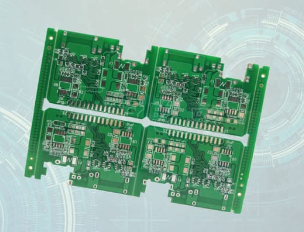
The Impact of High Speed Signals on PCB Performance
High-speed signals in printed circuit boards (PCBs) have become increasingly significant as modern electronic devices demand faster data transmission rates and higher performance. These signals, typically characterized by their rapid rise and fall times, can profoundly impact the overall performance of a PCB. Understanding the implications of high-speed signals is crucial for engineers and designers to ensure the reliability and efficiency of electronic systems.
One of the primary effects of high-speed signals on PCB performance is signal integrity.
As the frequency of signals increases, the likelihood of signal degradation due to various factors such as reflection, crosstalk, and electromagnetic interference (EMI) also rises. Reflection occurs when a signal encounters an impedance mismatch along its transmission path, causing part of the signal to be reflected back towards the source. This can lead to signal distortion and data errors, which are particularly problematic in high-speed applications where precision is paramount.
Crosstalk, another critical issue, arises when a signal in one trace induces an unwanted signal in an adjacent trace.
This phenomenon is exacerbated at higher frequencies due to the increased electromagnetic coupling between traces. Crosstalk can result in noise and interference, potentially compromising the integrity of the transmitted data. To mitigate crosstalk, designers often employ techniques such as maintaining adequate spacing between traces, using differential signaling, and incorporating ground planes to shield sensitive signals.
Electromagnetic interference (EMI) is also a significant concern in high-speed PCB design.
High-speed signals can radiate electromagnetic energy, which can interfere with other components and systems. EMI can lead to performance degradation, data corruption, and even regulatory compliance issues. To address EMI, designers may use techniques such as proper grounding, shielding, and the implementation of filtering components to suppress unwanted emissions.
In addition to signal integrity challenges, high-speed signals can also impact the thermal performance of a PCB.
As the frequency and data rates increase, so does the power consumption of the components. This can result in higher heat generation, which must be effectively managed to prevent overheating and ensure the longevity of the PCB. Thermal management strategies, such as the use of heat sinks, thermal vias, and proper component placement, are essential to dissipate heat and maintain optimal operating temperatures.
Moreover, the physical layout of the PCB plays a crucial role in managing high-speed signals.
The length and routing of traces, the placement of components, and the use of vias all influence the performance of high-speed signals. For instance, longer traces can introduce signal delay and attenuation, while vias can cause impedance discontinuities. To optimize the layout, designers often use simulation tools to model and analyze the behavior of high-speed signals, allowing them to make informed decisions about trace routing, layer stack-up, and component placement.
Furthermore, the choice of materials used in the PCB can significantly affect high-speed signal performance.
Materials with low dielectric constant and low loss tangent are preferred for high-speed applications, as they minimize signal loss and dispersion. Advanced materials such as high-frequency laminates and low-loss substrates are commonly used to achieve the desired electrical performance.
In conclusion, high-speed signals have a profound impact on PCB performance, influencing signal integrity, thermal management, physical layout, and material selection. Addressing these challenges requires a comprehensive understanding of high-speed design principles and the implementation of best practices to ensure reliable and efficient operation. As electronic devices continue to evolve and demand higher performance, the importance of managing high-speed signals in PCB design will only continue to grow.

